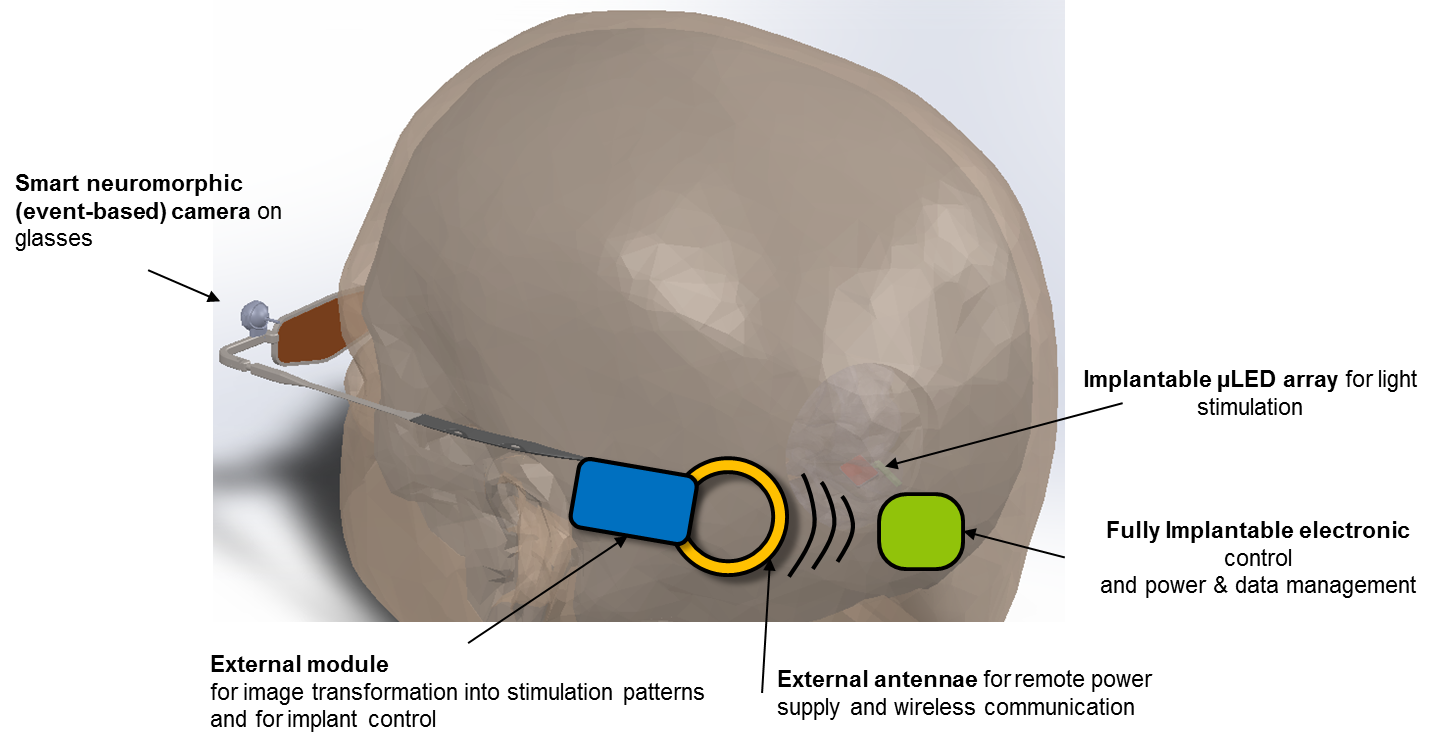Funded by the U.S. Defense Advanced Research Projects Agency (DARPA), the Neural Engineering System Design program (NESD) sets out to expand neurotechnology capabilities and provide a foundation for future treatments of sensory deficits.
Scientists from Leti and Clinatec, Leti's biomedical research center focused on applying micro- and nanotechnology innovations to health care, are part of a consortium conducted by the Paris Vision Institute under the leadership of Prof. José-Alain Sahel and Dr. Serge Picaud. The Vision Institute is a leading European research center in eye diseases, and is part of the Seeing and Hearing Foundation (Fondation Voir et Entendre, FVE), which was awarded the DARPA grant.
The FVE team project, called CorticalSight, is part of the six projects selected by DARPA to participate in the groundbreaking NESD program. CorticalSight will apply techniques from the field of optogenetics to enable communication between neurons in the visual cortex and a camera-based, high-definition artificial retina worn over the eyes. Leti will lead the development of the active implantable medical device that will interface with the visual cortex.
Clinatec and its Leti partners will focus on developing a safe, wireless, implantable system that restores vision through light stimulation of optogenetically modified neurons in the visual cortex. Leti is tasked with designing an implantable device, as well as creating hermetic packaging and radiofrequency links for the implantable system, and subsequently conducting technical test benches. The Leti implant will enable visual cortex optical-stimulation patterns, and integrate the underlying control electronics within a minimally invasive cortical implant.
"Clinatec's integrated approach to high-tech, medical-device R&D, extending from Leti's technological development to in-house clinical expertise and testing capabilities, allows our teams to address cutting-edge medtech development challenges," said Prof. Alim-Louis Benabid, Clinatec's chairman of the board, and co-investigator of the CorticalSight project. "This contribution to the CorticalSight consortium will pave the way to new therapeutic devices for vision restoration thanks to the NESD program."
Partners of the CorticalSight project also include the French companies Chronocam® and Gensight®, Stanford University, Inscopix® and the Friedrich Miescher Institute of Switzerland.
